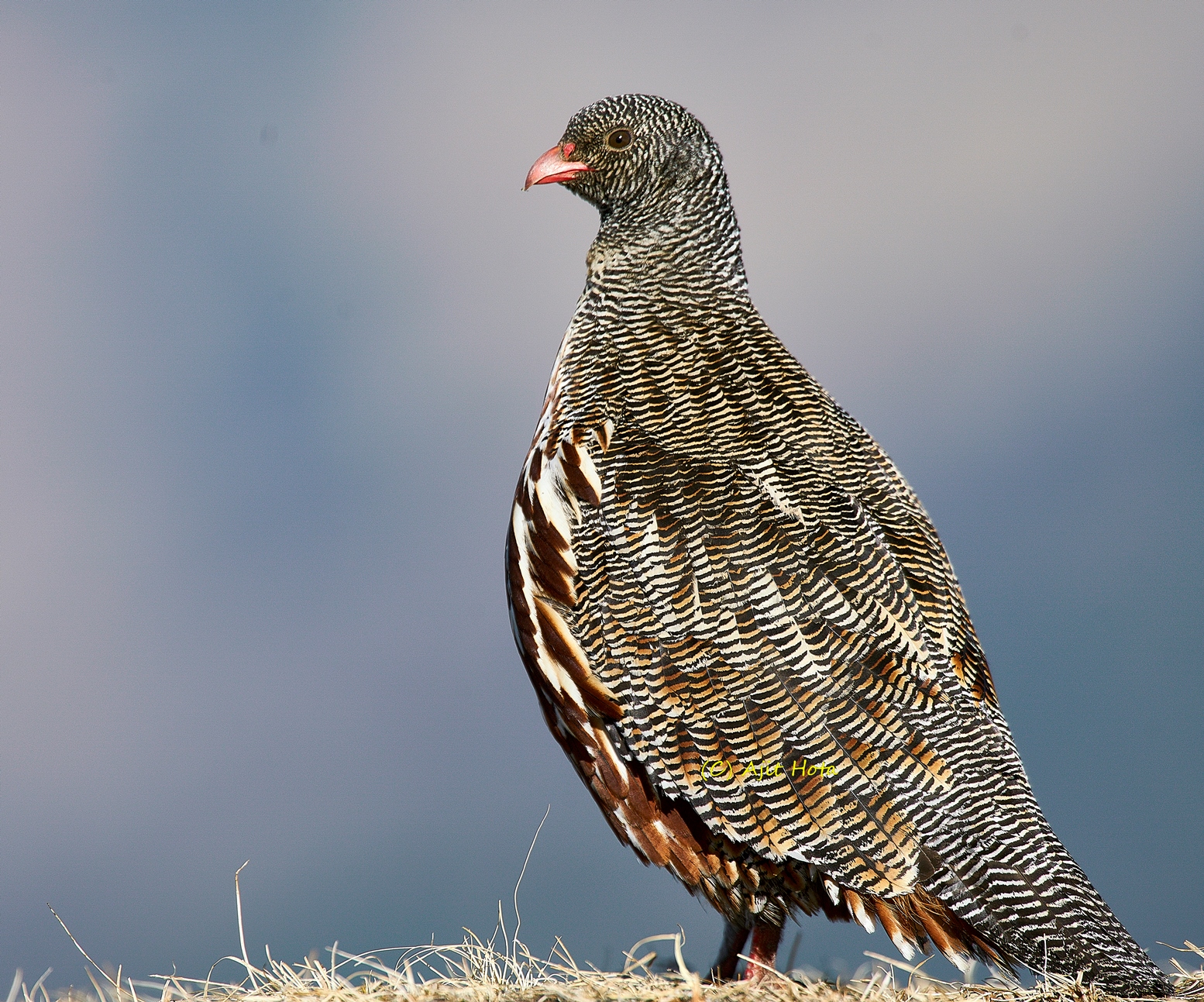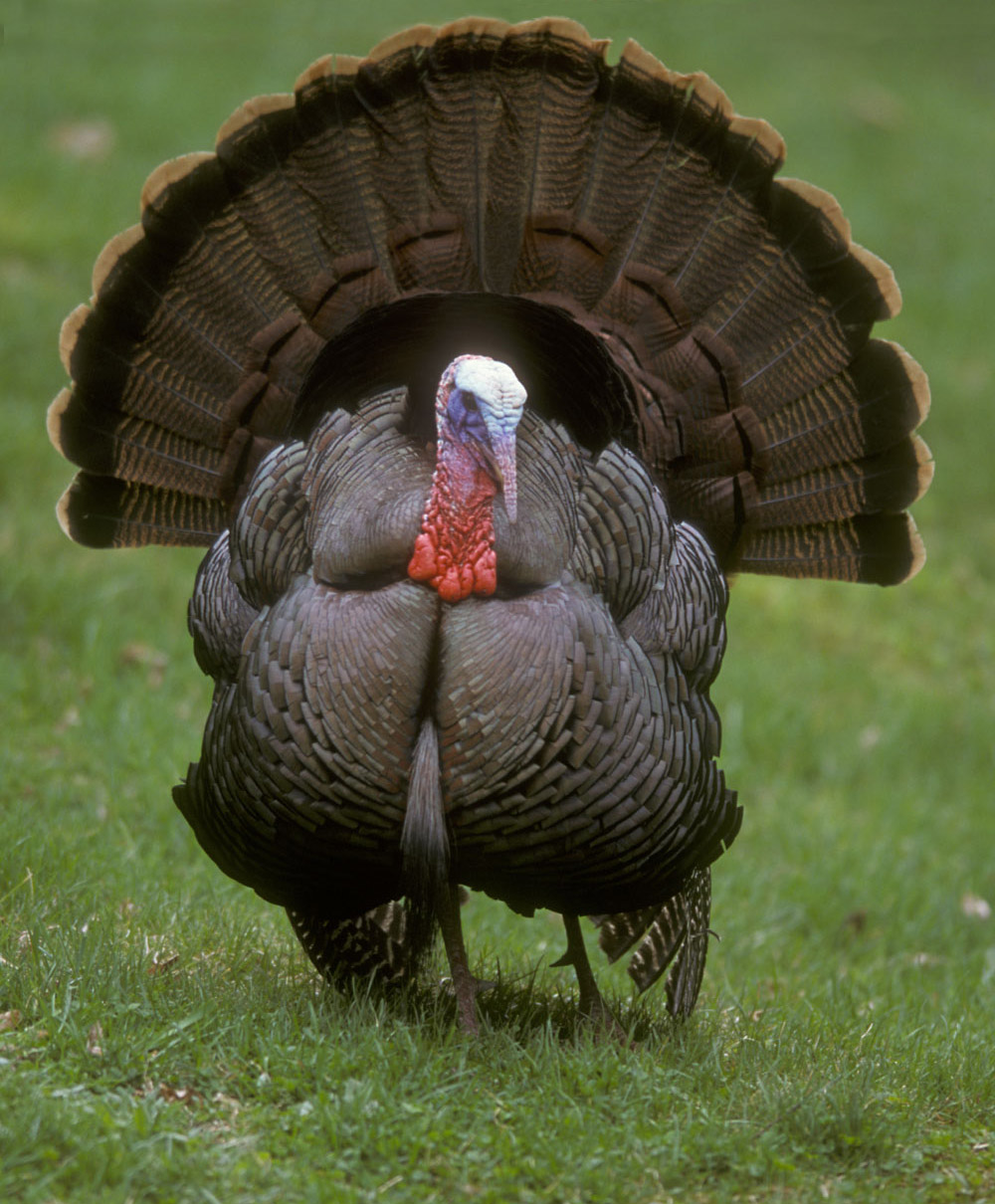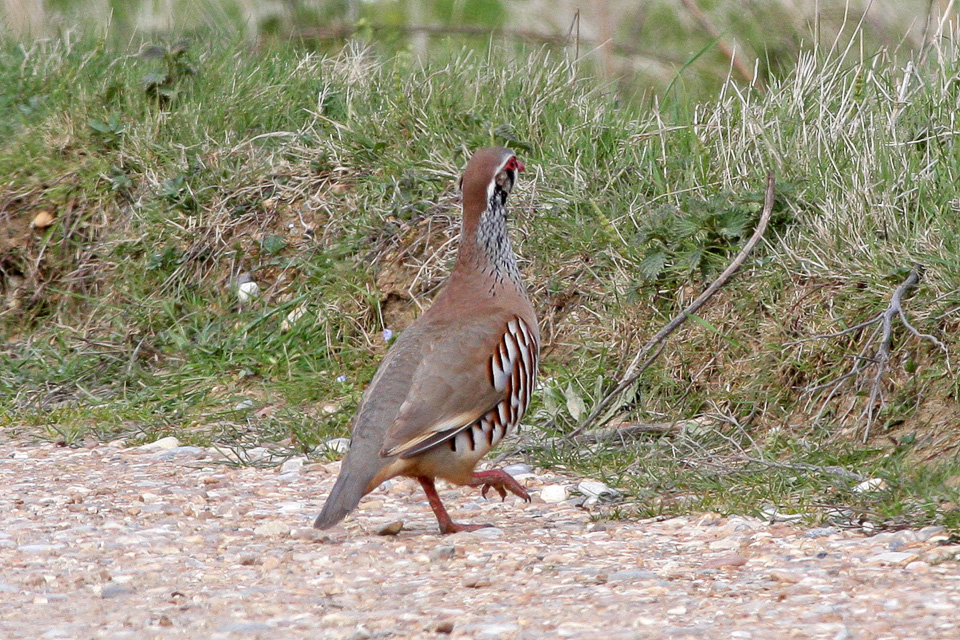|
Phasianinae
The Phasianinae (Thomas Horsfield, Horsfield, 1821) are a subfamily (biology), subfamily of the pheasant family (Phasianidae) of landfowl, the order (biology), order Galliformes. The subfamily includes true pheasants, tragopans, grouse, Turkey (bird), turkey and similar birds. Although this subfamily was considered Monophyly, monophyletic and separated from the partridges, francolins, and Old World quails (Perdicinae) until the early 1990s, Molecular phylogenetics, molecular phylogenies have shown that this placement is paraphyletic. For example, some partridges ''(''genus ''Perdix'') are more closely affiliated to pheasants, whereas Old World quails and partridges from the genus ''Alectoris'' are closer to junglefowls. There are two clades in the Phasianinae: the erectile clade and the non-erectile clade, referring to erectile tissue in the non-feathered parts of the face. Both clades are believed to have diverged during the early Oligocene, about 30 million years ago. The P ... [...More Info...] [...Related Items...] OR: [Wikipedia] [Google] [Baidu] |
Phasianidae
Phasianidae is a family (biology), family of heavy, ground-living birds, which includes pheasants, grouse, partridges, junglefowl, chickens, Turkey bird, turkeys, Old World quail, and peafowl. The family includes many of the most popular Game (hunting), gamebirds. The family includes 185 species divided into 54 genera. It was formerly broken up into two subfamily (biology), subfamilies, the Phasianinae and the Perdicinae. However, this treatment is now known to be paraphyly, paraphyletic and polyphyly, polyphyletic, respectively, and more recent evidence supports breaking it up into two subfamilies: Rollulinae and Phasianinae, with the latter containing multiple Tribe (biology), tribes within two clades. The New World quail (Odontophoridae) and guineafowl (Numididae) were formerly sometimes included in this family, but are now typically placed in families of their own; conversely, grouse and turkey (bird), turkeys, formerly often treated as distinct families (Tetraonidae and Melea ... [...More Info...] [...Related Items...] OR: [Wikipedia] [Google] [Baidu] |
Landfowl
Galliformes is an order (biology), order of heavy-bodied ground-feeding birds that includes turkey (bird), turkeys, chickens, Old World quail, quail, and other landfowl. Gallinaceous birds, as they are called, are important in their ecosystems as seed dispersers and predators, and are often reared by humans for their meat and eggs, or hunted as game birds. The order contains about 290 species, inhabiting every continent except Antarctica, and divided into five Family (biology), families: Phasianidae (including chicken, quail, partridges, pheasants, turkeys, peafowl (peacocks) and grouse), Odontophoridae (New World quail), Numididae (guinea fowl), Cracidae (including chachalacas and curassows), and Megapodiidae (incubator birds like malleefowl and Brushturkey, brush-turkeys). They adapt to most environments except for innermost deserts and perpetual ice. Many gallinaceous species are skilled runners and escape predators by running rather than flying. Males of most species a ... [...More Info...] [...Related Items...] OR: [Wikipedia] [Google] [Baidu] |
Pheasant
Pheasants ( ) are birds of several genera within the family Phasianidae in the order Galliformes. Although they can be found all over the world in introduced (and captive) populations, the pheasant genera's native range is restricted to Eurasia. The classification "pheasant" is paraphyletic, as birds referred to as pheasants are included within both the subfamilies Phasianinae and Pavoninae, and in many cases are more closely related to smaller phasianids, grouse, and turkey (formerly classified in Perdicinae, Tetraoninae, and Meleagridinae) than to other pheasants. Pheasants are characterised by strong sexual dimorphism, males being highly decorated with bright colours and adornments such as wattles. Males are usually larger than females and have longer tails. Males play no part in rearing the young. A pheasant's call or cry can be recognised by the fact it sounds like a rusty sink or valve being turned. Pheasants eat mostly seeds, grains, roots, and berries, while in ... [...More Info...] [...Related Items...] OR: [Wikipedia] [Google] [Baidu] |
Perdicinae
Perdicinae is a polyphyletic former subfamily of birds in the pheasant family, Phasianidae, regrouping the partridges, Old World quails, and francolins. Although this subfamily was considered monophyletic and separated from the pheasants, tragopans, junglefowls, and peafowls ''(Phasianinae)'' till the early 1990s, molecular phylogenies have shown that these two subfamilies actually constitute only one lineage. For example, some partridges ( Perdix genus) are more closely affiliated to pheasants, whereas Old World quails and partridges from the Alectoris genus are closer to junglefowls. Due to this, the subfamily Perdicinae is no longer recognized by the International Ornithological Congress, with the species being split among 3 subfamilies. Perdicinae is a non-migratory Old World group. These are medium-sized birds, and are native to Europe, Asia, Africa, and the Middle East. They are ground-nesting seed-eaters. The subfamily includes the partridges, the snowcocks, ... [...More Info...] [...Related Items...] OR: [Wikipedia] [Google] [Baidu] |
Francolin
Francolins are birds in the tribe Gallini that traditionally have been placed in the genus ''Francolinus'', but now commonly are divided into multiple genera. As previously defined, they were paraphyletic as the genus '' Pternistis'', which was previously included in '' Francolinus'', is more closely related to Old World quails than it is to the other francolins. Beginning in 2004, various ornithologists have recommended that it would be clearer to use "spurfowl" for all members of the genus ''Pternistis'' and restrict the use of "francolin" to the other species presently or formerly classified in '' Francolinus''. When ''Pternistis'' is excluded, the francolins form a monophyletic clade that is a sister group to a clade comprising the junglefowl (''Gallus'') and the bamboo partridges (''Bambusicola''); together, these clades compose the tribe Gallini. Although formerly classified in the partridge subfamily Perdicinae, this classification is no longer supported, and they ... [...More Info...] [...Related Items...] OR: [Wikipedia] [Google] [Baidu] |
Partridge
A partridge is a medium-sized Galliformes, galliform bird in any of several genera, with a wide Indigenous (ecology), native distribution throughout parts of Europe, Asia and Africa. Several species have been introduced to the Americas. They are sometimes grouped in the Perdicinae subfamily of the Phasianidae (pheasants, quail, etc.). However, molecular research suggests that partridges are not a distinct taxon within the family Phasianidae, but that some species are closer to the pheasants, while others are closer to the junglefowl. Description Partridges are medium-sized Game (hunting), game birds, generally intermediate in size between the larger pheasants, smaller quail; they're ground-dwelling birds that feature variable plumage colouration across species, with most tending to grey and brown. Range and habitat Partridges are native to Europe, Asia, Africa, and the Middle East. Some species are found nesting on steppes or agricultural land, while other species prefer mor ... [...More Info...] [...Related Items...] OR: [Wikipedia] [Google] [Baidu] |
Oligocene
The Oligocene ( ) is a geologic epoch (geology), epoch of the Paleogene Geologic time scale, Period that extends from about 33.9 million to 23 million years before the present ( to ). As with other older geologic periods, the rock beds that define the epoch are well identified but the exact dates of the start and end of the epoch are slightly uncertain. The name Oligocene was coined in 1854 by the German paleontologist Heinrich Ernst Beyrich from his studies of marine beds in Belgium and Germany. The name comes from Ancient Greek (''olígos'') 'few' and (''kainós'') 'new', and refers to the sparsity of Neontology, extant forms of Mollusca, molluscs. The Oligocene is preceded by the Eocene Epoch and is followed by the Miocene Epoch. The Oligocene is the third and final epoch of the Paleogene Period. The Oligocene is often considered an important time of transition, a link between the archaic world of the tropical Eocene and the more modern ecosystems of the Miocene. Major chang ... [...More Info...] [...Related Items...] OR: [Wikipedia] [Google] [Baidu] |
Sexual Dimorphism
Sexual dimorphism is the condition where sexes of the same species exhibit different Morphology (biology), morphological characteristics, including characteristics not directly involved in reproduction. The condition occurs in most dioecy, dioecious species, which consist of most animals and some plants. Differences may include secondary sex characteristics, size, weight, color, markings, or behavioral or cognitive traits. Male-male reproductive competition has evolved a diverse array of sexually dimorphic traits. Aggressive utility traits such as "battle" teeth and blunt heads reinforced as battering rams are used as weapons in aggressive interactions between rivals. Passive displays such as ornamental feathering or song-calling have also evolved mainly through sexual selection. These differences may be subtle or exaggerated and may be subjected to sexual selection and natural selection. The opposite of dimorphism is ''monomorphism'', when both biological sexes are phenotype, ... [...More Info...] [...Related Items...] OR: [Wikipedia] [Google] [Baidu] |
Wattle (anatomy)
A wattle is a fleshy Caruncle (bird anatomy), caruncle hanging from various parts of the head or neck in several groups of birds and mammals. Caruncles in birds include those found on the face, wattles, dewlaps, Snood (anatomy), snoods, and earlobes. Wattles are generally paired structures but may occur as a single structure when it is sometimes known as a dewlap. Wattles are frequently organs of sexual dimorphism. In some birds, caruncles are erectile tissue and may or may not have a feather covering. Wattles are often such a striking Morphology (biology), morphological characteristic of animals that they feature in their common name. For example, the southern and northern cassowaries are known as the double-wattled and single-wattled cassowary, respectively, and a breed of domestic pig is known as the red wattle hog, Red Wattle. Birds Function In birds, wattles are often an ornament for courting Sexual selection, potential mates. Large wattles are correlated with high testos ... [...More Info...] [...Related Items...] OR: [Wikipedia] [Google] [Baidu] |
Junglefowl
Junglefowl are the only four living species of bird from the genus ''Gallus'' in the bird order Galliformes, and occur in parts of South and Southeast Asia. One of the species in this genus, the red junglefowl, is of historical importance as the direct ancestor of the domestic chicken, although the grey junglefowl, Sri Lankan junglefowl and green junglefowl are likely to have also been involved. The Sri Lankan junglefowl is the national bird of Sri Lanka. They diverged from their common ancestor about 4–6 million years ago. Although originating in Asia, remains of junglefowl bones have also been found in regions of Chile, which date back to 1321–1407 CE, providing evidence of possible Polynesian migration through the Pacific Ocean. The junglefowl are omnivorous, eating a variety of leaves, plant matter, invertebrates such as slugs and insects, and occasionally small mice and frogs. These are large birds, with colourful plumage in males, but are nevertheless difficult ... [...More Info...] [...Related Items...] OR: [Wikipedia] [Google] [Baidu] |
Taxonomic Sequence
Taxonomic sequence (also known as systematic, phyletic or taxonomic order) is a sequence followed in listing of taxa which aids ease of use and roughly reflects the evolutionary relationships among the taxa. Taxonomic sequences can exist for taxa within any rank, that is, a list of families, genera, species can each have a sequence. Early biologists used the concept of "age" or "primitiveness" of the groups in question to derive an order of arrangement, with "older" or more "primitive" groups being listed first and more recent or "advanced" ones last. A modern understanding of evolutionary biology has brought about a more robust framework for the taxonomic ordering of lists. A list may be seen as a rough one-dimensional representation of a phylogenetic tree. Taxonomic sequences are essentially heuristic devices that help in arrangements of linear systems such as books and information retrieval systems. Since phylogenetic relationships are complex and non-linear, there is no uniqu ... [...More Info...] [...Related Items...] OR: [Wikipedia] [Google] [Baidu] |






